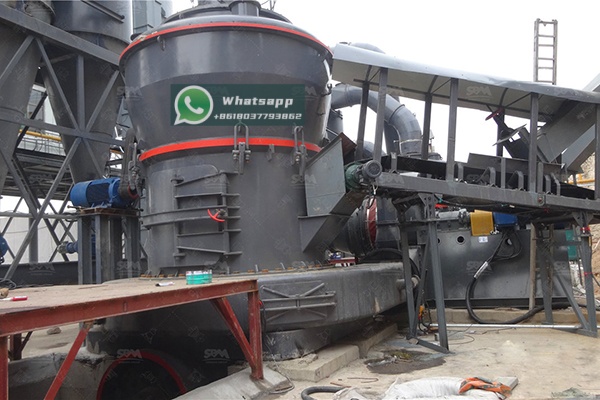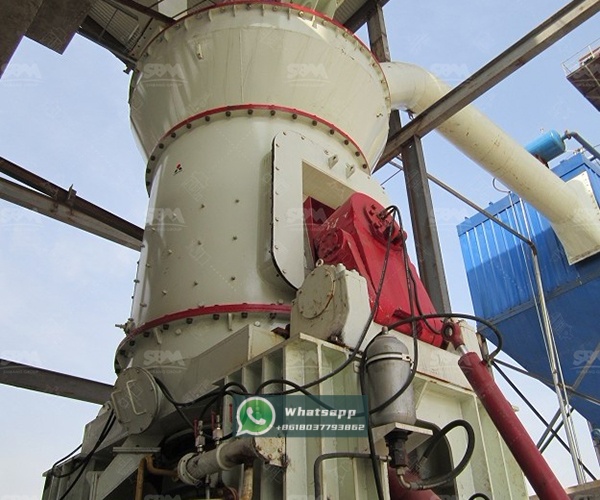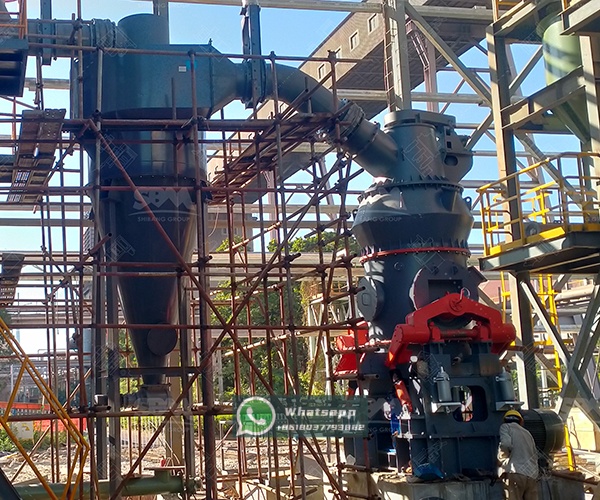The global energy market continues to rely heavily on coal as a primary energy source, with bituminous coal representing one of the most widely traded varieties due to its balanced properties and versatile applications. For export-oriented operations, achieving consistent particle size distribution and optimal moisture content is paramount to meet international quality standards and maximize economic returns. The grinding process plays a crucial role in preparing bituminous coal for transportation, combustion efficiency, and various industrial applications.
Bituminous coal typically contains volatile matter ranging from 20% to 40% and possesses a higher heating value compared to other coal types. However, its grinding characteristics present unique challenges, including potential fire hazards, explosion risks, and varying grindability indices. Modern vertical mill systems have emerged as the preferred technology for addressing these challenges while ensuring operational efficiency and product quality for export markets.

When preparing bituminous coal for international markets, several critical parameters must be considered. The particle size distribution significantly impacts combustion efficiency, with most export specifications requiring 80-85% passing through 200 mesh (74 microns). Moisture content must be carefully controlled, typically below 2% for pulverized coal injection in blast furnaces and below 10% for general power generation applications. Additionally, the grinding system must maintain consistent product quality despite variations in raw coal characteristics, which is essential for meeting contractual obligations with international buyers.
The abrasiveness of bituminous coal, measured by the Hardgrove Grindability Index (HGI), typically ranges from 45 to 80, with higher values indicating easier grinding. Export operations must account for these variations through flexible grinding systems capable of maintaining performance across different coal sources. Furthermore, the grinding process must incorporate adequate safety measures to prevent dust explosions and spontaneous combustion, particularly important for coal that will undergo extended storage during maritime transportation.
Vertical roller mills have revolutionized coal grinding operations by integrating multiple processes into a single, compact unit. Unlike traditional ball mills that rely on impact and attrition between grinding media, vertical mills utilize centrifugal force to grind materials between rollers and a rotating table. This fundamental difference in operating principle translates to significant advantages for bituminous coal processing, particularly in export-oriented facilities where efficiency, reliability, and product consistency are critical.
The integrated drying capability of vertical mills represents a particularly valuable feature for bituminous coal processing. By utilizing hot gases from auxiliary systems or dedicated air heaters, these mills can simultaneously grind and dry coal with moisture contents up to 20%, eliminating the need for separate drying equipment. This not only reduces capital investment but also minimizes thermal degradation of volatile components, preserving the energy content essential for export quality.

Vertical mill systems offer several distinct advantages specifically beneficial for export coal preparation. Their significantly lower power consumption – typically 15-30% less than ball mills of equivalent capacity – translates to reduced operating costs, a crucial factor in competitive international markets. The compact footprint of vertical mills minimizes space requirements, an important consideration for port-side facilities where real estate costs are substantial.
From a product quality perspective, vertical mills provide superior particle size distribution control through integrated dynamic classifiers. This ensures consistent fineness regardless of variations in feed characteristics, essential for meeting strict export specifications. Additionally, the gentle grinding action in vertical mills generates less heat, reducing the risk of volatile matter loss and thermal degradation that can diminish the calorific value of exported coal.
Shanghai Zenith Machinery Co., Ltd. has established itself as a leading manufacturer of industrial grinding equipment with extensive experience in mineral processing applications. The company’s specialization in research, development, and production of powder grinding equipment has resulted in innovative solutions specifically engineered for challenging materials like bituminous coal. Among their comprehensive product portfolio, two vertical mill systems stand out for coal grinding applications: the LM Vertical Grinding Mill series and the LUM Ultrafine Vertical Mill.
The LM Vertical Grinding Mill represents Zenith’s flagship solution for coal grinding applications, integrating five essential functions – crushing, grinding, powder selection, drying, and material conveying – into a single, efficient unit. This integrated approach makes it particularly suitable for export-oriented bituminous coal processing facilities where space optimization and operational efficiency are paramount.
For bituminous coal grinding applications, we specifically recommend the LM Vertical Coal Mill series, engineered to handle the unique challenges of coal processing. The following table details the technical parameters of key models in this series:
| Model | Plate diameter (mm) | Capacity (t/h) | Max feed size (mm) | Main motor (kW) |
|---|---|---|---|---|
| LM130M | 1300 | 10-17 | <38 | 185 |
| LM220M | 2200 | 35-50 | <50 | 500 |
| LM280M | 2800 | 60-90 | <50 | 900 |
The LM series incorporates several patented technologies that enhance its performance for coal grinding. The innovative grinding roller sealing system prevents coal dust leakage while maintaining optimal grinding pressure. The mill’s ability to handle feed materials with sizes up to 50mm reduces the need for extensive pre-crushing systems, simplifying the overall process flow. Furthermore, the modular design facilitates maintenance and component replacement, minimizing downtime – a critical factor for export operations with tight shipping schedules.
For export markets requiring exceptionally fine coal powders for specialized applications such as pulverized coal injection in steel manufacturing or advanced combustion systems, Shanghai Zenith offers the LUM Ultrafine Vertical Mill. This advanced grinding system builds upon the foundation of the LM series while incorporating additional refinements for ultrafine powder production.
The LUM mill features an innovative grinding mechanism that combines compression and shearing forces, resulting in more efficient size reduction with lower energy consumption. The integrated dynamic classifier provides precise control over product fineness, enabling operators to consistently meet the stringent specifications of premium export markets. Key technical parameters for the LUM series include:
| Model | Main machine power (kW) | Capacity (t/h) | Size distribution D97 (μm) |
|---|---|---|---|
| LUM1525 | 220-250 | 1.6-11.5 | 5-30 |
| LUM1632 | 280-315 | 2.0-13.5 | 5-30 |
| LUM1836 | 355-400 | 2.3-15 | 5-30 |
This mill’s intelligent control system automatically adjusts operational parameters in response to changing feed characteristics, maintaining consistent product quality despite variations in raw coal properties. The LUM series also features enhanced safety systems specifically designed for coal grinding, including explosion venting, inert gas blanketing capability, and comprehensive fire detection and suppression systems.

Implementing vertical mill technology for bituminous coal grinding requires careful consideration of several operational factors. The variability in coal characteristics between different mining sources necessitates flexible system design capable of accommodating a range of grindability indices and moisture contents. For export facilities that may process coal from multiple suppliers, this flexibility becomes particularly important.
Dust control and explosion prevention represent critical safety considerations in coal grinding operations. Modern vertical mills address these concerns through multiple strategies, including maintaining oxygen concentrations below combustion thresholds, implementing comprehensive spark detection and extinguishing systems, and constructing pressure-shock-resistant housings. These safety features are essential for obtaining insurance coverage and meeting international standards for coal handling facilities.
Maintenance planning must account for the abrasive nature of bituminous coal, which causes wear on grinding components. Shanghai Zenith’s vertical mills incorporate wear-resistant materials in critical areas and feature designs that facilitate quick replacement of wearing parts. This approach minimizes maintenance downtime, ensuring consistent operation to meet export shipping schedules.
The economic viability of vertical mill systems for export coal grinding extends beyond initial capital investment. The significantly higher energy efficiency of vertical mills compared to alternative technologies translates to substantial operational cost savings over the equipment lifecycle. Additionally, the consistent product quality achieved with these systems commands premium prices in international markets where specifications are strictly enforced.
When evaluating total cost of ownership, factors such as maintenance requirements, component lifespan, and operational flexibility must be considered. Shanghai Zenith’s vertical mills are engineered with these considerations in mind, featuring robust construction, readily available spare parts, and modular designs that facilitate upgrades as export requirements evolve.
Vertical mill systems represent the current state-of-the-art in bituminous coal grinding technology for export applications. Their superior energy efficiency, compact footprint, integrated drying capability, and precise particle size control make them ideally suited for the demanding requirements of international coal markets. Shanghai Zenith Machinery’s LM Vertical Grinding Mill and LUM Ultrafine Vertical Mill series offer proven solutions that address the technical, operational, and economic challenges of export-oriented coal processing facilities.
As global coal trade continues to evolve with increasing quality specifications and environmental considerations, advanced grinding technologies will play an increasingly important role in maintaining competitiveness. The integration of intelligent control systems, enhanced safety features, and wear-resistant designs in modern vertical mills positions this technology as the foundation for efficient, reliable, and profitable coal export operations now and into the future.